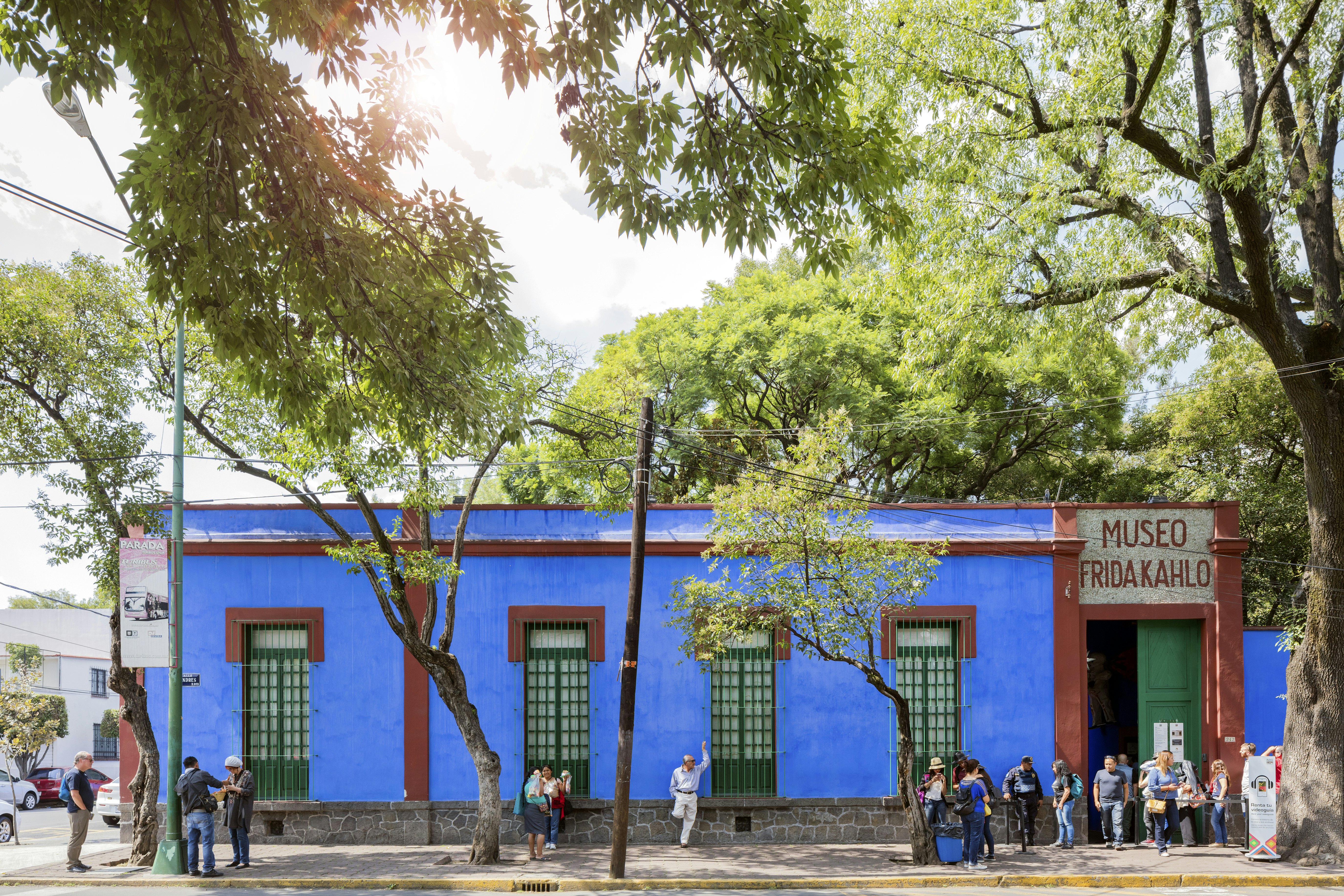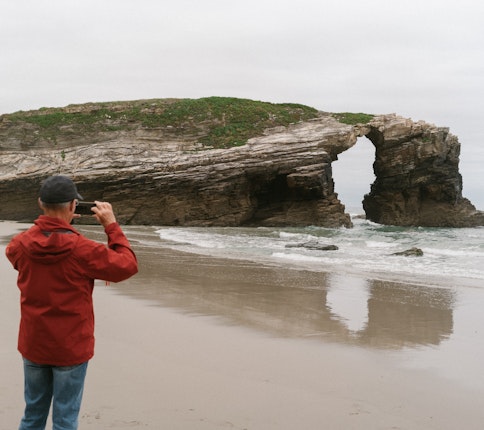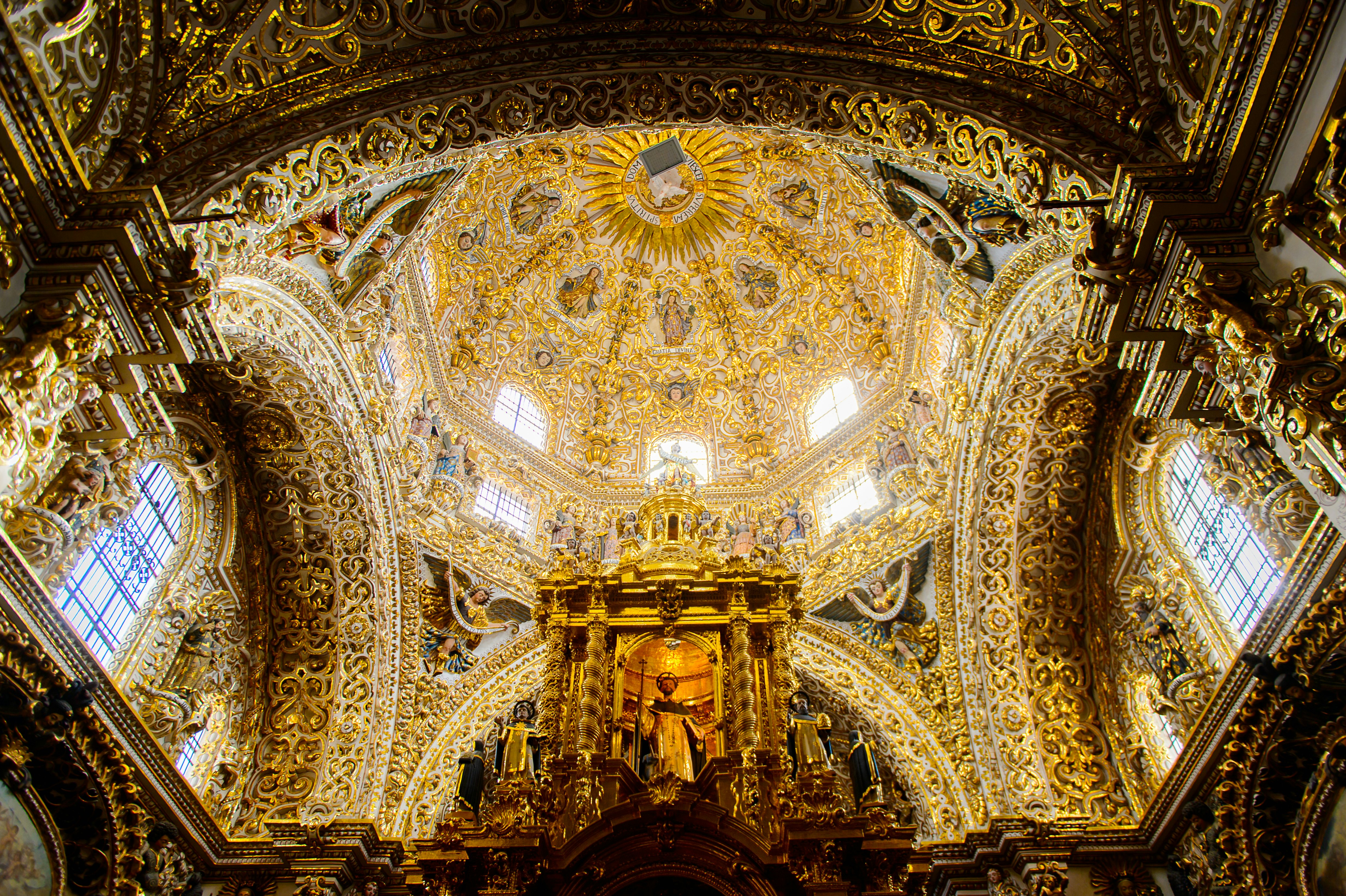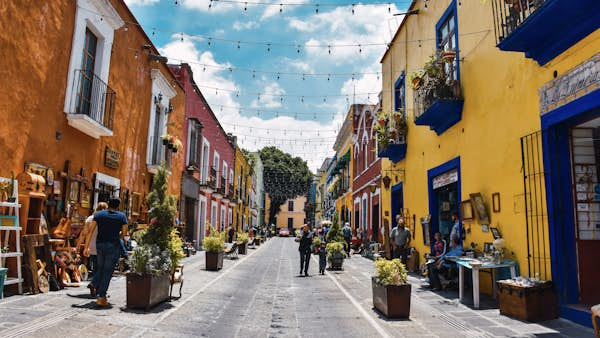Cantinas and cathedrals. Art and archaeology. Mariachis and mountains. Ruins and rainbow reefs. Mexico promises rich travel experiences for lovers of adventure, romance, history, culture, food, festivals, beaches…well, for just about anyone.
With its snowcapped mountains, charm-oozing towns and thousands of miles of coastline (Caribbean, Gulf and Pacific), the biggest challenge is pinpointing just where you want to go.
That’s where we come in. Consider these nine nominees for the best places to visit in Mexico.

1. Mexico City
Best for vibrant art and world-class culture
In Mexico City, the whole breadth of Mexican arts and culture throbs with color and energy. Layers of storied history shimmer everywhere you look. Centuries-old forms of performing arts, such as pre-Hispanic dances and mariachi music, are still enacted in public plazas. Vivacious parades, as seen on Día de Muertos (Day of the Dead), celebrate life and draw crowds.
Art is sewn into the very fabric of the city of Frida Kahlo and Diego Rivera. World-class museums cover every era of Mexico’s cultural history. But it’s the street art displayed on the walls of public buildings everywhere here that are a picture book of the people’s past, from Aztec times to colonial struggles. Alongside them, modern forms spring to life in graffiti splashed throughout the city. While history is potent here, Mexico City is still hungry to embrace the future – and you can sense this creative energy on every street.
Planning tip: Museo Frida Kahlo in Coyoacán is the must-visit tribute to the artist in Mexico City. It’s where she was born, worked and lived, and is now a museum. It’s also wildly popular, and requires booking tickets in advance. (We recommend well in advance.)

2. Veracruz
Best for off-the-beaten-path nature encounters
Somewhat under the radar, the state of Veracruz enjoys a lush, tropical climate and has a decidedly languid, unhurried nature. This underrated state is best explored at a leisurely pace, taking your time to visit remote sandy bays, rewarding ruins and low-key, cultured towns. With more than 447 miles (720km) of coastline, towering mountains, jungle rivers and wildlife-rich lagoons, Veracruz boasts incredible natural diversity. Blockbusters sights aren’t a main draw here – yet in some ways, this is a strength, with no crowds to contend with and incredibly welcoming locals.
Historic, bustling Veracruz City is the country’s busiest port and has an intoxicating traditional dance scene, with couples strutting their stuff every weekend in the main plaza. Further inland, Mexico’s highest mountain – snowcapped Pico de Orizaba – beckons, within reach of the appealing town of Orizaba. A delightful meld of coffee plantations and cobbled villages, including Xico and Coatepec, encircle the city of Xalapa. Down south, sultry Laguna Catemaco and the Biosphere Reserve of Los Tuxtlas entice with lush vegetation and dreamy waterfalls.

3. Yucatán Peninsula
Best for Caribbean beaches and ancient ruins
Only one Mexican region can dazzle you with ancient Maya ruins, azure Caribbean waters and photogenic colonial cities within an easy drive of one another: the Yucatán Peninsula. Mexico’s southeasternmost corner has a staggering array of natural and human-made wonders. This is the place for snorkeling with sea turtles, basking in cenotes (natural pools) or kayaking through biosphere reserves, followed by evening drinks by the beach.

The best way to stay connected.
Saily provides a hassle-free solution to travel data — just choose your
data plan and prepare for your trip. When you get to your destination,
you can go online right away.
Get your eSIM
Beyond the Caribbean coast, the forested interior holds fabled archaeological treasures. The towering pyramids of Chichén Itzá, Uxmal and Calakmul are but a few of the dozens of impressive ancient Maya sites dotting the peninsula. The Spanish also left their mark in cobblestone-lined, pastel-hued city centers – such as the one in Mérida, first laid out more than 400 years ago.
Planning tip: You’ll find navigating the peninsula easy thanks to the arrival of the Maya Train, which connects seaside cities, colonial towns and archaeological ruins along its 965-mile-long (1554km-long) circuit.

4. Central Pacific coast
Best for beachfront towns
Gigantic aquamarine breakers provide the backdrop to any visit to the central Pacific coast, the hissing, retreating waves revealing some of the country’s most beautiful beaches. The coastline is dotted with resorts. The former Hollywood haunt of Acapulco, its star now somewhat faded, still titillates with its diving spectacles, while at characterful Zihuatanejo villas peek out of greenery-laden hillsides overlooking a magnificent bay. In buzzy Puerto Vallarta – Mexico’s LGBTIQ+ beach capital – clubs pulsate until dawn, and cobbled streets are lined with galleries brimming with psychedelic Huichol artwork. Old-school Mazatlán delivers German banda music and tropical neoclassical architecture.
Whether you’re looking for a carefree beach holiday complete with giant sunsets; surfable waves all to yourself; seafood-heavy cuisine and creative cocktails; the chance to spot humpback whales breaching on the horizon; or an ancient city that once rivaled the Aztecs’ stronghold, you’ll find it all here.
Planning tip: The best time of year for whale-watching is from December to March.

5. Chiapas
Best for learning about Indigenous culture
Mexico’s southernmost state, rural Chiapas can feel remote and uncrowded – yet for millennia, settled communities have called its forest-clad mountains, valleys and plains home. Meanwhile, the tropical rainforests in the south and east of Chiapas conceal some of Mexico’s most beguiling and best-preserved Maya ruins, most notably Palenque.
The state only receives a trickle of visitors. But intrepid travelers are frequently rewarded with horde-free wonders and authentic cultural interactions around the charming traditional towns and highland villages. The Chiapas highlands still retain one of the richest veins of Indigenous culture in Mexico. Around rustic Comitán and San Cristóbal de las Casas, with its lively handicrafts markets, you’ll likely overhear Maya languages such as Tzeltal, Tzotzil or Chuj being spoken as frequently as Spanish. While political tensions do occasionally flare up, it is generally safe to travel around the region.
Planning tip: Time your visit to San Juan Chamula on a Sunday, when you can catch one of the region’s most colorful markets right in front of the main church.

6. Baja Peninsula
Best for road trips
There are plenty of ways to get active on a peninsula known for sportfishing, diving, surfing, desert-fringed beaches and epic nature encounters with whale sharks and massive gray whales. And then there’s the unforgettable culinary scene: beer-battered fish tacos and Baja Med cuisine with aromatic local wines, best enjoyed while watching the sun sink into the Pacific.
In all its immense, mystical beauty, Baja stretches from gritty Tijuana to Los Cabos, some 1039 miles (1670km) away via the scenic Transpeninsular Highway. In between lie rolling vineyards, snowcapped mountains, untamed deserts and turquoise seas that take your breath away. The region hosts an astounding number of plants, animals and birds, as well as people: everyone from sun-dazed surfers and RV nomads to big-city folks and outdoor enthusiasts can find something – or somewhere – to enjoy here. It’s not just for tourists, either: the locals take great pride in their traditional cattle ranches, eco-conscious organic farms, and wildlife-rich marine parks and protected nature reserves.

7. Oaxaca City
Best for traditional celebrations
Oaxaca City looms large in history and culture with its time-honored folk art, deep-rooted Indigenous traditions and an innovative culinary scene that draws on age-old recipes. Energetic and yet surprisingly easygoing for such a populated place, the city always has something festive going on, especially in July and late October to early November, when hordes of visitors flock to the city for Guelaguetza and Día de Muertos (Day of the Dead), both exuding energy as brass bands and traditional dancers parade through the city’s narrow streets.
Given the capital’s extensive sleeping, eating and nightlife options, travelers often use Oaxaca City as a base to explore nearby ancient ruins and outlying Zapotec towns, many of which are endowed with captivating artisan workshops. Culture lovers come for the first-rate museums and galleries, while provocative street art and atmospheric mezcal joints offer glimpses of the city’s gritty side.
Planning tip: If you come for Día de Muertos, don’t miss the candlelit vigils in Santa Cruz Xoxocotlán’s cemeteries, which have colorful altars and spirited serenades.

8. San Miguel de Allende
Best for small-city charm
Enter a real-life painting, with vibrantly painted colonial buildings accented by creeping bougainvillea, cobblestone streets and some of the finest art and design studios in Mexico. Even with the growing number of expats putting down roots in San Miguel de Allende, this UNESCO- and Mexican heritage–protected city maintains its local culture, present with seemingly never-ending religious festivals (audible through constant fireworks), Indigenous artisanship and a population of young Mexicans cashing in on the modern-day silver rush. It’s a cross-cultural exchange that works, thanks in large part to strict preservation rules.
Eat at the numerous restaurants doing international fare well, and taste specialty coffee (cafe de olla latte made with cinnamon and clove, anyone?) along with local natural wine. Then shop for extraordinary artwork to bring a bit of San Miguel home with you.

9. Puebla
Best for architecture and cuisine
Any Mexican can tell you about Puebla’s stunningly preserved baroque center, with more than 1000 colonial-era buildings and 70 churches adorned with blue-and-white Talavera tiles – yet the city has undergone a stunning transformation, and today offers a wealth of enticing experiences in addition to all the architectural beauty. A dynamic cultural life, thriving art and nightlife scenes driven by younger poblanos (as Pueblans are known), a bohemian artists’ quarter and cutting-edge modern museums are essential to today’s Puebla. Still, tradition and history remain present in Cinco de Mayo celebrations and through the preservation and reverence of an ancient pyramid just next door in Cholula.
Puebla is also one of the country’s culinary heartlands. Names long synonymous with Mexico are actually from Puebla – dishes such as chiles en nogada and mole poblano were developed here. All together, Puebla offers visitors both the fine and the fun.

